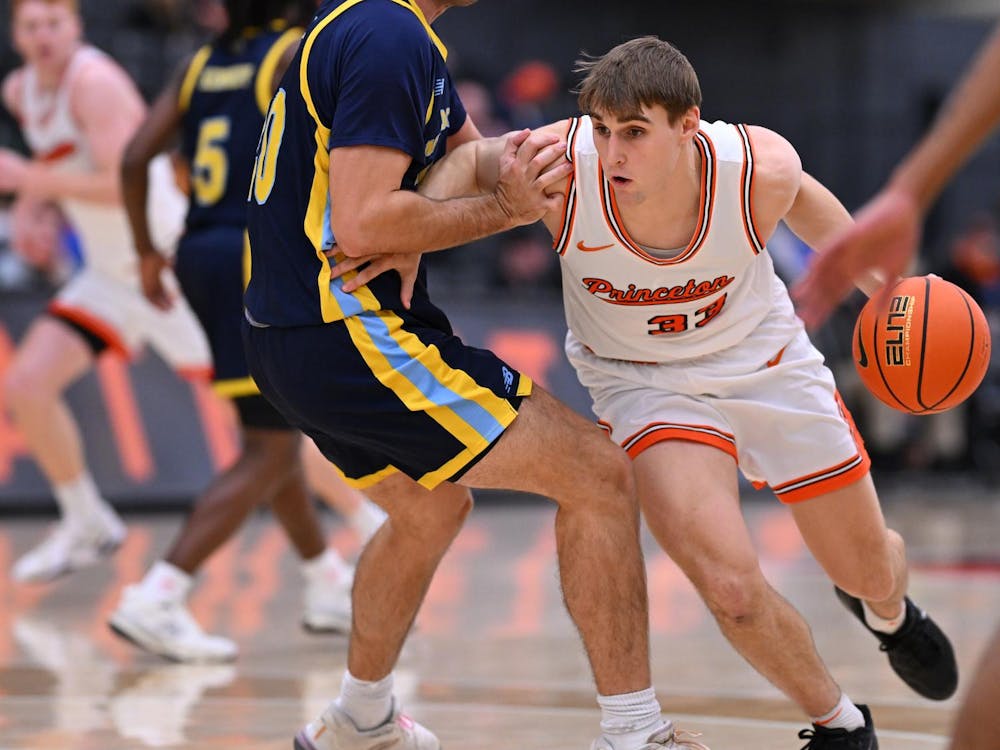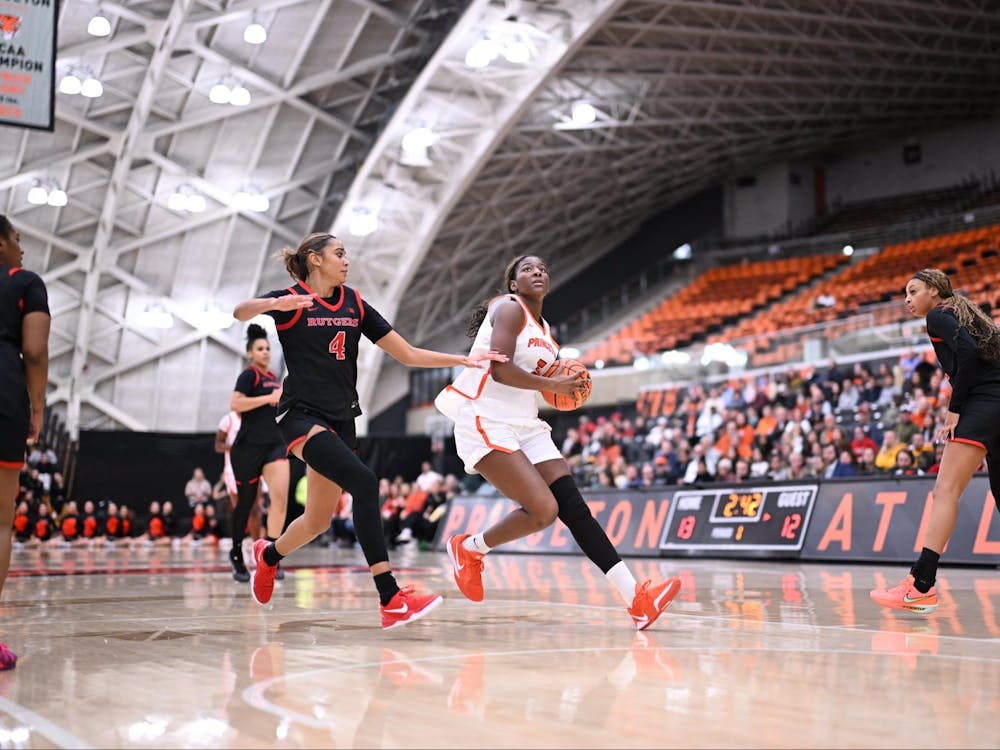Field hockey. For anyone outside of Europe or the Northeast U.S., the sport has an air of mystery about it. What is field hockey? Is it like ice hockey? Lacrosse? Polo? Why is there no men's field hockey? Why don't they wear shorts?
To answer the question about shorts first, field hockey originated in Scotland, where it was and still is a men's sport. Thus, players wear kilts. In fact, field hockey is still a men's sport to some degree almost everywhere except for the United States.
Field hockey at Princeton is played on the artificial turf at 1952 Stadium. Though high school field hockey in America is often played on grass, college-level field hockey is played almost exclusively on the fake stuff. Field hockey becomes a vastly different sport when played on natural grass, as the ball rolls very poorly. Therefore, in Europe and southern Asia, where the sport is very popular, artificial turf fields are the rule.
Teams are ten to a side, plus a goalie. The field is basically the size of a soccer field, with large semicircles 16 yards from the goal on every side. Players are only allowed to score on shots from inside of the circles. The game, in general, flows much like soccer, in that ball movement is key and matches tend to be low-scoring.
Despite its initial similarity to soccer, however, field hockey has many significant differences. For one, there is no offside rule. Players are allowed to be anywhere on the field at any time, which allows for a fun-to-watch, full-field passes. Also, obviously, players are not allowed to touch the ball with their feet.
For those who haven't seen someone with a field hockey stick, it is rounded on one side and flat on the other. Only the flat side is legally usable — not that any benefit is gained by hitting the ball with the rounded side. The stick's structure allows for several different types of strikes, from a softer lob to a forceful drive, in which the player powers through the ball as hard as she can.
The stick's unique one-sided build adds an additional element of strategy into the game. All sticks are the same, which means the left-handed people are forced to learn to shoot righty. Teams will occasionally focus their attack on the right side of an opponent's defense, theoretically the more difficult side to defend. Also, such a structure makes it more difficult to pass or maneuver the ball to the right.
As in ice hockey, the player is only allowed to raise the stick a certain distance up into the air, depending on the type of shot being hit. If the player breaks this rule, she incurs a foul, which results in the opposing team receiving a free hit. Other fouls include hitting the ball with one's foot, obstructing the opponent (blatantly blocking an opponent from the ball), or misuse of the free hit.

The free hit, which is the general product of any foul, is exactly what it sounds like. The fouled team's player gets several unguarded seconds to pass or shoot the ball, a valuable gain. In addition, if the foul is exceptionally bad, such as a flagrant physical foul or if the goalie falls on the ball, the opposing team gets a "stroke."
A stroke is basically a one-on-one situation involving a member of the attacking team and the goalie. What makes it unusual is that the fouled player is not allowed to move at all before striking it, and that the strike must then be executed in a single fluid motion. Also, the stick is not allowed to make any noise when contacting the ball.
If the attacker violates any of these rules, their shot doesn't count, and possession is returned to the defending team. However, if the criteria are all met, a stroke almost always results in a goal unless the goalie guesses the right direction to move and makes a spectacular play.
Another situation unique to field hockey is the corner. A corner occurs at the 16-yard circle, directly in front of the goal. The defending team gets four people and the goalie, and the attackers receive their full complement of ten, some of whom remain back. A member of the attacking team stands at the endline halfway between the corner and the goal. She then passes it to a teammate at the circle, who must stop the ball and then either pass it or shoot it. Almost like a soccer corner kick, a corner occurs whenever a defender touches the ball with her feet inside the circle.








